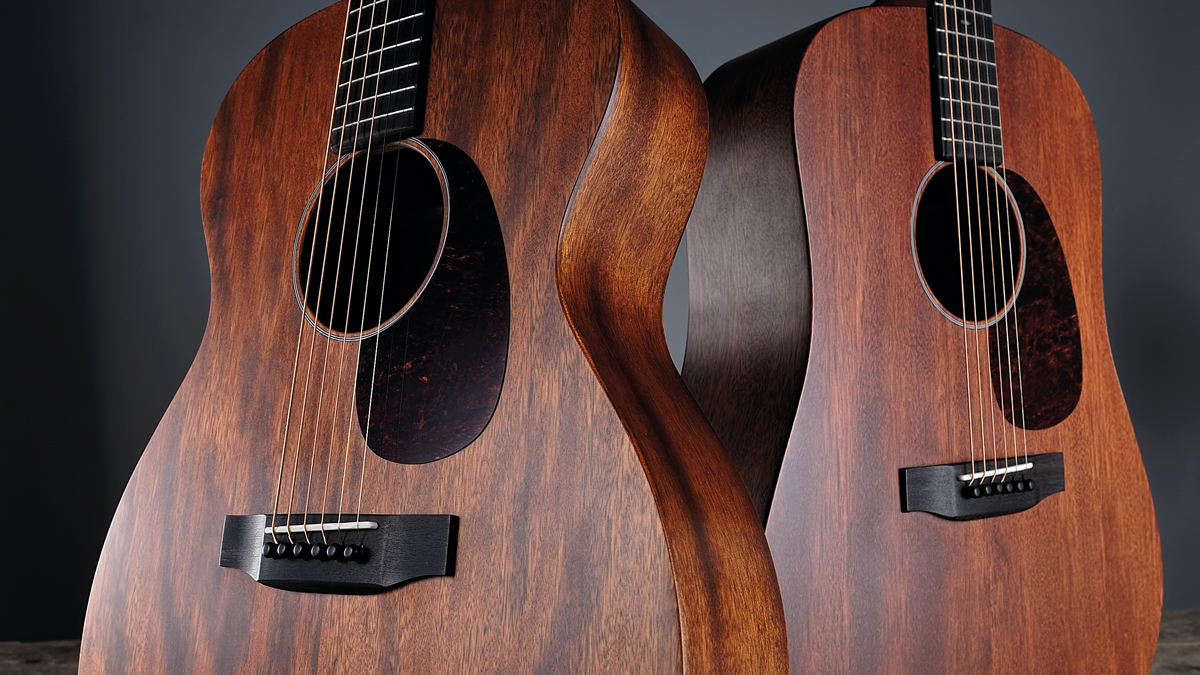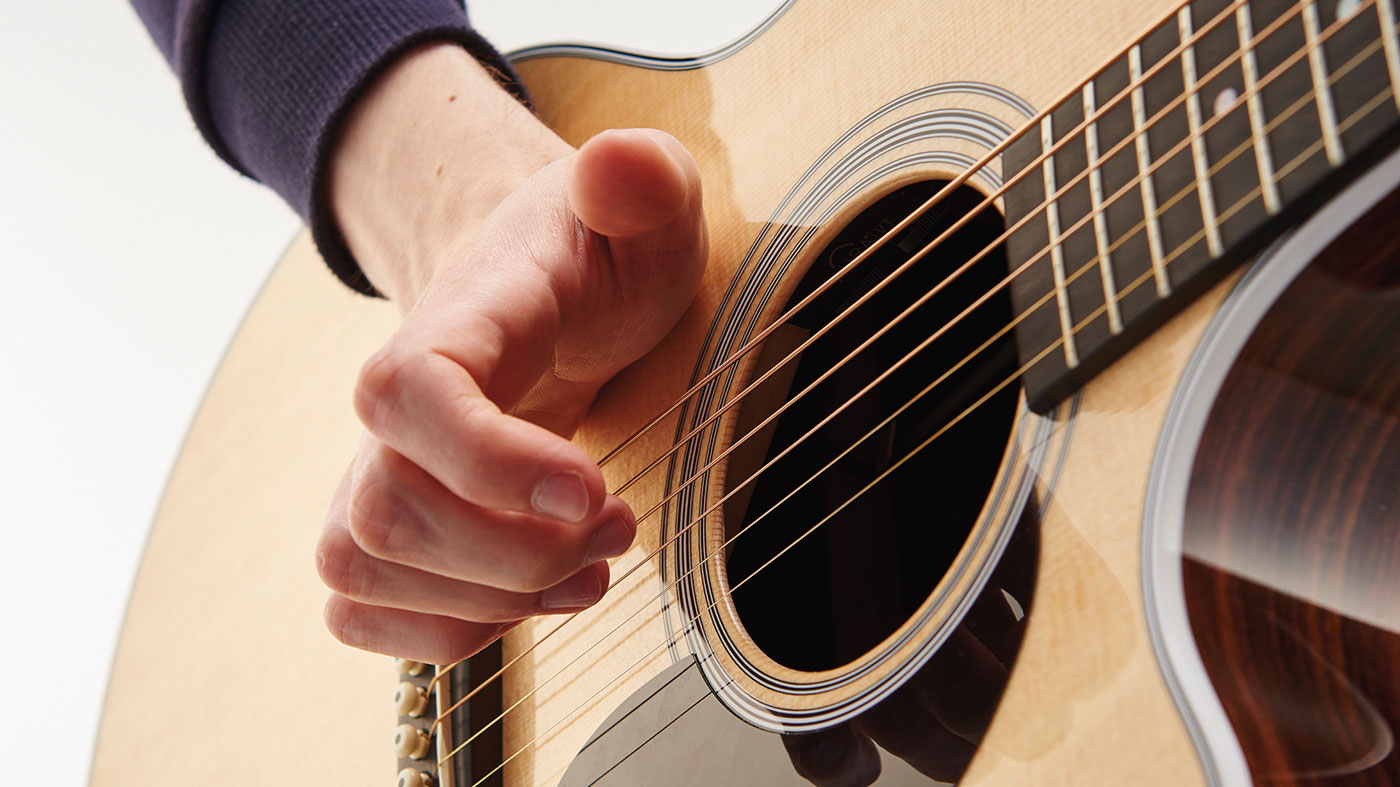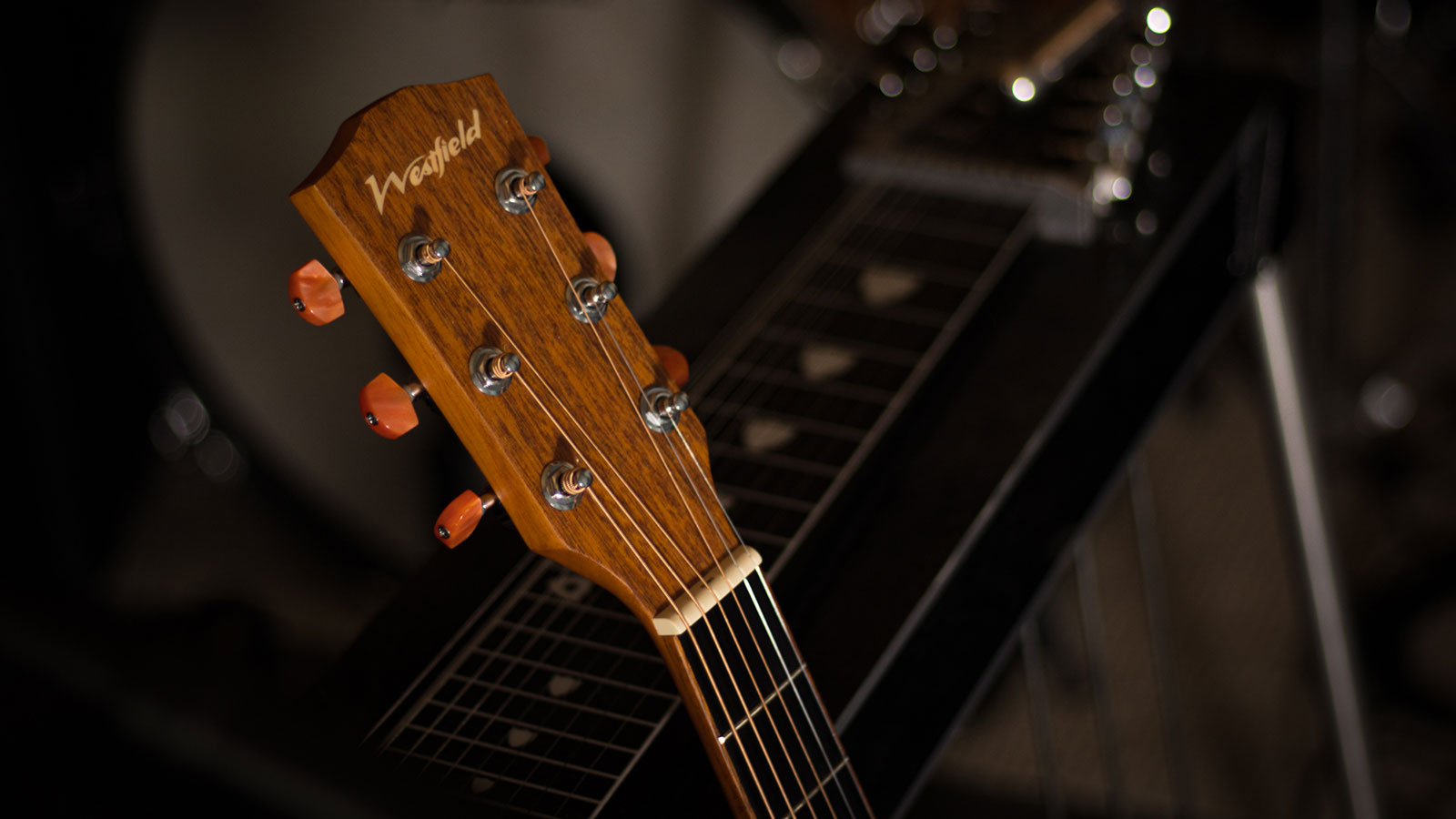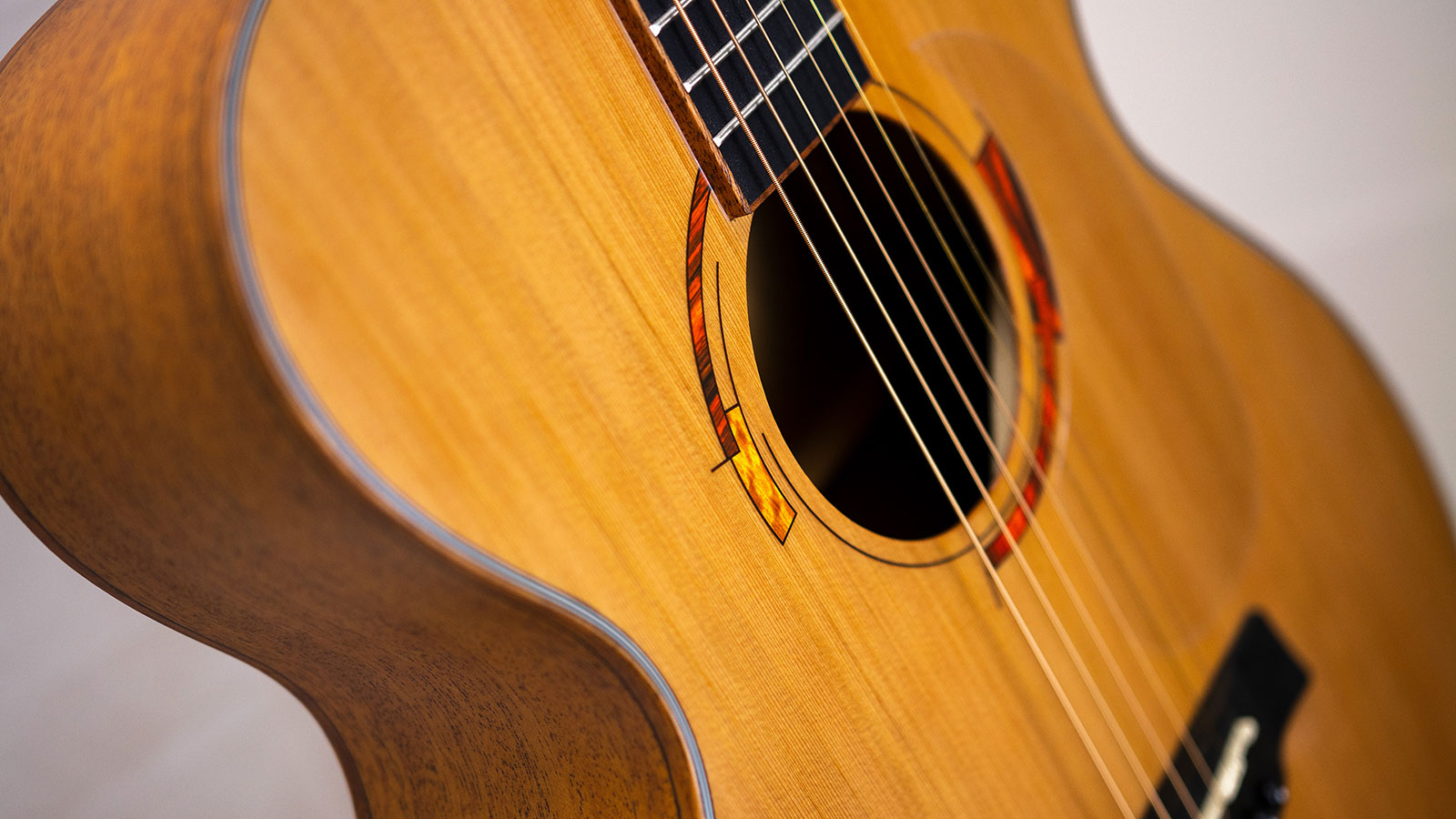10 must-know DIY acoustic guitar maintenance tips
Our top tips to keep your beloved instrument in tip-top condition - and when you should really go to a pro

GUITAR SHOWCASE 2022: It's no secret that guitars are fickle instruments, susceptible to the elements and often prone to damage under clumsy or inexperienced hands.
Just as every car needs care and attention to keep the motor running, guitars benefit hugely from a bit of TLC
What happens when it's gig time and you realise to your horror that 'old faithful' suddenly has the action of a lapsteel or is buzzing from each end of the neck? We guitarists invest hundreds if not thousands in our gear, and it can be frightening to find out just how many of us wait until something goes wrong to start taking proper care of our instruments.
Just as every car needs care and attention to keep the motor running, guitars benefit hugely from a bit of TLC every now and then. Having a good local tech or luthier is naturally a great solution, but many problems can be solved or prevented entirely without resorting to more costly measures.
We've gathered together our top tips for 10 different areas of guitar maintenance that every guitarist should know - master them all, and your guitar will thank you with year after year of faithful service.

1. Understanding humidity
Unless you're rocking one of those newfangled carbon fibre wonders, chances are your guitar is constructed from a selection of different tonewoods. Wood is of course highly reactive to moisture, which makes the humidity of the environment surrounding your guitar vitally important.
Compared to their electrified cousins, acoustic guitars are especially vulnerable thanks to their relatively thin, delicate construction. While this does bring all that lovely tone and projection that makes acoustics what they are, it also opens up our beloved instruments to a wide array of problems.
A higher humidity level means that there is more moisture in the air; moisture that your acoustic's porous tonewoods will gobble up like it was their last meal. This excess moisture causes the wood to swell, which can result in joins separating at various points of the guitar (the bridge for example can start to lift), and the action becoming noticeably less playable.
Get the MusicRadar Newsletter
Want all the hottest music and gear news, reviews, deals, features and more, direct to your inbox? Sign up here.
Dryness on the other hand is potentially much more serious. When wood suffers from a severe lack of moisture it shrinks, which can result in cracks in the guitar's top or a warped neck. A tell-tale sign of dryness is the edges of your frets suddenly feeling sharp as they come away from the wood. Alternatively, another check is to put a ruler across the lower bout of your guitar, under the bridge. The guitar's top should bow outwards slightly, leaving small gaps underneath the ruler towards the outside edges. If the guitar is flat or worse, slightly sunken, then you should take action.
To avoid any humidity problems you need to create a stable environment for your guitar. Ideally you want a relative humidity of 45-55%. Room temperature can be difficult to regulate, so one of the best tips is actually to make sure you put your guitar back in its case in between sessions.
Yes, it looks better sat on a stand or hanging on a wall, but the simple fact is that a case's atmosphere is much easier to manage - especially when you implement a product such as the Moiss humidity controller. This clever little gizmo sits in the soundhole when the guitar is safely tucked away in its case, and will constantly monitor the relative humidity inside the case.
Alternatively, buy yourself a digital hygrometer, a humidifier and a de-humidifier, and carefully monitor your guitar's environment, adjusting as and when required.
When to consult a pro: If your guitar shows signs of significant humidity-related damage, such as cracks and separated joints.

2. Cleaning your guitar
Sweat, dead skin and the natural oils in your skin can all have an effect on your guitar's appearance and playability
Cleaning your guitar is one of the most basic and most important parts of effective guitar maintenance. Whether you're dealing with a budget, all-laminate strummer or a luthier-crafted masterpiece, every guitar deserves a regular clean and will feel better to play as a result.
Sweat, dead skin and the natural oils in your skin can all have an effect on your guitar's appearance and playability, from leaving marks in the finish to corroding the frets and leaving nasty deposits on the fingerboard. Keep a clean, dry cloth handy in your guitar case at all times, and be sure to give the guitar a good wipe from head (stock) to toe (er… bridge?) before and after every play session.
For a more thorough clean, there are countless specialised guitar cleaning products available out there. Just be sure to read the label and make sure the cleaner is suitable for your particular guitar and finish.
When to consult a pro: If you've used the wrong kind of cleaner and caused damage to your guitar's finish.
3. Fingerboard conditioning
Unlike the body of your guitar, the fingerboard is almost always left unfinished and unsealed. That's why it's often the first area to show the effects of dryness, and the main way of avoiding this is by periodically conditioning the fingerboard with a guitar-specific product.
The better conditioners will not only hydrate the wood but also lift dirt and grime whilst polishing the frets. Ensure that any cleaner you buy is designed for dark, natural wood fingerboards and does not include silicone in its list of ingredients. Also be careful not to over-condition - remember, you're adding moisture to the mix, and too much can cause adverse effects.
When to consult a pro: If your fingerboard displays cracks or loose/sharp frets.

4. Restring like a pro
Restringing a guitar is something that a surprising amount of players can get wrong and can result in a number of issues, from string breakage to poor intonation and tuning stability. How you start off depends on what kind of guitar (and bridge) you're dealing with.
For most steel-strung guitars you'll either have a series of slots to keep the strings secure or a set of bridge pins. These can be pulled out with a small, tong-like tool if they're particularly well wedged-in, but generally they should come out fairly easily by hand.
The ball ends of your new strings should then be pulled up tightly against the bridge pins, with the string slots facing forwards to ensure a straight string-pull. The pins should be replaced by pressing down firmly with your thumb - don't press too hard, or you'll risk damaging the bridge or the pins themselves when the time comes to remove them again.
For classical guitars you'll have to be a bit more dexterous and tie a knot to keep the strings in place. Different guitarists inevitably have different ways of doing this, but the simplest way in our opinion is to (once you've threaded the string through the bridge) bring the string back and loop under itself twice, with the very end of the string trapped at the back of the bridge. Be careful not to tie anything too tightly - the tension of the string should do most of the work.
Once you've dealt with the bridge, it's time to move on to the headstock. With a solid headstock, loop your string through the tuning post. Once through, turn the string half way around the post (clockwise for the three lower strings, anti-clockwise for the upper strings) until the short end passes under the main length of the string.
Once it's gone under, bend it back and over to lock the string in place. This should result in a secure fit that won't slip during play and ensures as straight a string-pull as possible.
For slotted headstocks you're following the same basic method, except you'll be feeding the strings from front to back before looping the end of the string around. In both cases, the string should wrap around the post at least twice while being tuned to pitch in order to keep the tuning stable and to reduce the risk of breakage.
When to consult a pro: If your tuning is constantly going out even after days of playing-in the strings, or if you suffer from frequent breakages.
5. Neck alignment
Neck relief is another topic that can easily intimidate inexperienced and veteran guitarists alike. There's no shame in consulting your local expert when it comes to matters of the neck, and more often than not they'll be happy to give you a few pointers or give you a second opinion.
There are two main symptoms that indicate a problem with neck relief. The first is significant buzzing between the first and seventh frets, and the second is an unusually high action.
The former suggests that your neck may be too straight (or worse), while the latter suggests that the neck has bowed too far forward. A common misconception is that you should adjust the truss rod to set your guitar's action, but in reality the neck should always be slightly bowed, with the truss rod only being adjusted to solve genuine problems with the neck relief, and the action controlled by adjustments to the nut and saddle (see elsewhere in this article).
Assessing the neck relief is actually a fairly easy task in itself. Begin by fretting the low E string at the first fret with one hand, and the twelfth fret with the other. Using a capo to free up one hand (or both, if you have two) is a good idea, otherwise you might have to ask someone else to help you out a bit.
Once you've got both areas of the string fretted, take out a ruler and measure the gap between the bottom of the string and the top of the seventh fret. The average neck relief is between 8/1000 and 10/1000 of an inch - if your measurement strays further than 12/1000 of an inch or conversely lies flat against the fret, then there is a problem with the neck relief, which will need adjusting with the truss rod.
If your neck relief is fine but you're still having problems with the string height, then you should consider making adjustments to the nut or saddle.
When to consult a pro: If you're struggling to get an accurate measurement or you experience patches of buzzing in different areas of the neck despite a normal neck relief.

6. Diagnosing problems with the nut
Stop sniggering, you.
Yes, this section of our guide is inevitably going to be filled with endless euphemisms, but nut maintenance (I said stop!) is an important area of guitar repair and something we could all do with understanding.
In most instances, we would actually recommend seeing a pro in the first instance unless you're extremely comfortable with filing down the wood on your guitar, or simply aren't bothered if it goes extremely wrong. However, diagnosing problems from home can help isolate any issues and help you figure out the best way of dealing with them.
Like checking neck relief, the best way to diagnose any problems with the nut is to simply fret each of your strings at the third fret (yep, another good time to use your trusty capo), and then check the distance between each string and the top of the first fret. If when fretting the strings move more than a few thousandths of an inch, then the nut could possibly benefit from a bit of filing (with a specialised set of nut files, natch) to lower the action. If the opposite is true, then the nut may actually be filed too low already and require a bit of a boost.
When to consult a pro: Honestly, unless you already have a set of nut files to hand and a lot of confidence, this is an area where 99% of the time we would suggest taking your guitar to a pro. But that doesn't mean you can't diagnose the problem yourself!
7. Making adjustments to the bridge
More often than not, the bridge is a much better place to go than the nut when it comes to adjusting your guitar's action. By comparison the saddle is a much easier piece of your guitar to modify and also much easier to replace should the worst happen.
That's because with most modern guitars, the saddle is easily removed when re-stringing the guitar. If you've got an older style guitar where the bridge is set into the body however, you're best off taking a trip down to your local tech or luthier.
Before making any adjustments to the saddle, it's very important to check the nut height and neck relief first. Misdiagnosing the problem could cost you more money and time, not to mention the sheer frustration. If they're both OK and you're still having problems, then saddle adjustment may well be the way to go.
The next thing to check is the radius of the saddle itself, which should be perfectly aligned to the radius of your neck - if it isn't, then you might require a new saddle altogether. Finally, if your guitar features an undersaddle piezo pickup, consider taking it straight to a pro. These pickups rely on a perfect setup at the saddle, and any inaccurate or sloppy adjustments could affect the string balance and quality of your plugged-in tone.
OK, if you're decided on making adjustments to the saddle yourself, then your first step should always be to measure the height of each string at the twelfth fret, and make a note of them. Then you'll need to decide how much you'd like to raise or lower them - this number is then multiplied by two to find the correct amount of adjustment required at the saddle.
Make sure that your intended measurements still enable your saddle to sit securely and tightly within the bridge, and that your intended height sits between 1/32 and 3/16 of an inch. If your intended changes sit outside of that area - yep, you guessed it - consult a pro.
To lower your saddle, you'll need to measure out your adjustments with a pencil, under the slots for the high and low E strings. Use a ruler to join these two points and you should end up with a perfect level to file the saddle down to. The easiest way to then adjust the saddle is to set down some 80 grit sandpaper and sand down to the line you drew earlier.
Once you're there, finish it off with some 120 grit paper to get a better, flatter finish. This is extremely important for those of you with undersaddle pickups for the reasons we mention earlier.
Raising the saddle is thankfully much easier, and only involves placing a hard, flat piece of material under your saddle. Such items can be readily bought online as part of nut and saddle repair kits and are a handy item to keep in your tool kit. Often they're made from bone, plastic, or even wood, so take your pick and enjoy!
When to consult a pro: If you've got an expensive and/or delicate vintage guitar, or have an undersaddle pickup to consider.
8. Tackling the truss rod
If you've checked your neck relief and decided that there's a problem with the neck itself, it's time to get familiar with the truss rod. This can be one of the most intimidating areas of guitar maintenance to get accustomed to, and with good cause - messing this up can result in some serious damage to your beloved instrument. Making sure you have the right tool for the job is essential here - if you don't have the original adjustment tool that came with your guitar, check with your manufacturer and get a replacement.
Using the wrong tool could result in damage to the truss rod itself, which you want to avoid at all costs. Access to the truss rod can usually be found either at the top of the headstock beneath a truss rod cover, or at the base of the neck, under the soundhole.
Depending on the results of your neck relief assessment, you'll want to either tighten the truss rod (clockwise turns) to create more of a bow, or loosen it to straighten the neck (anti-clockwise). Before you make a single turn you should also make sure you're tuned to pitch, as this is the reference point for all neck adjustments.
The amount to turn inevitably varies from guitar to guitar, but as a guide you should look to make adjustments of roughly 1/8 to ¼ of a turn at a time. Regardless of your intended adjustment, we would normally advise loosening the neck first as a precaution. You should also play the guitar in between turns to allow the neck to bed in, before taking another measurement as outlined in Tip #5. It's a slow process, but patience is a virtue.
When to consult a pro: If you encounter any resistance or creaking in your adjustments, stop immediately and take your guitar to you nearest tech. You should also stop adjusting if after two full turns you haven't fixed the problem - it just isn't worth the risk.
9. Storing your guitar
Whether you're a gigging musician or a stay-at-home hobbyist, finding the right case for your acoustic is of vital importance. Not only does a good case protect your guitar from harm, it also helps to manage humidity by providing a more stable environment and protecting from sudden changes in temperature.
Your guitar might look great sat on a stand, but it only takes one disaster to ruin it all. Many years ago I myself came home from a weekend away during the winter months to find that my boiler had broken down.
To my horror I had left one of my guitars sat on a stand and, naturally, the neck was warped. Luckily I managed to get it fixed for a little over £100, but it could have been much, much worse. I've heard of others who have had pets, children and falling ornaments cause damage to their own guitars also. It's just not worth the risk!
But before all you hobbyists out there rush out to buy a set of guitar-shaped nuclear fallout bunkers, take a moment to consider what you really need from your guitar case.
Gig bags in particular have come a long, long way in recent years and nowadays you can find some reasonably priced examples from the likes of Mono that give exceptional levels of protection along with perks such as waterproofing. Not to mention the fact that they're also considerably lighter, ideal for gigs where, heaven forbid, you have to walk to the venue.
Some cases also come with hygrometers built in (ideal for monitoring humidity on the go). They're fairly rare, but Ortega produce a particularly nice selection. Typically, though, your average hardcase is in truth not all that protective, especially if you're thinking about trusting your guitar to the hands of airline baggage handlers.
That's when the likes of SKB cases are an absolute godsend, providing the kind of industrial protection that would give anyone peace of mind.
Regardless of which case you end up going for, it's always a good idea to invest in a digital hygrometer at the very least, or the stunningly helpful Humidipak by Planet Waves (D'Addario).
When to consult a pro: If you find that there's just too much to choose from, or need a second opinion about whether your current case is cutting the mustard.
10. Tools for the job
While many of these tips and tricks require little to no investment, there are inevitably a number of items that are helpful for a guitarist to keep in a safe place. Below we've listed some essential (and some not-so-essential) items that can be used to keep your guitar in the best possible condition.
•Metal ruler - with detailed inch measurements
•Truss rod adjustment tools
• Multi-meter
•Tuner
•Guitar cleaner
•Fretboard conditioner
•Fret-cleaning solution (e.g. Chrome Frets)
•Digital Hygrometer
•Humidifier
•De-humidifier
•Planet Waves Humidipak (plus refills)
•Cleaning cloths
•String winder/cutter (Planet Waves do a good one)
•High quality gig bag/hard case
•Nut files (optional)
•Sandpaper - 80 and 120 grit
•Magnifying glass (to help with minute measurements)
•Manuals - many makers offer PDF versions of your guitar's manual - stick them on your computer or smartphone for easy reference. Manuals can contain important information about recommended strings, action, required tools, warranty, etc.


“A purpose-built solution for bassists seeking unparalleled sound-shaping capabilities”: Darkglass Electronics unveils the Anagram Bass Workstation – a state-of-the-art multi-effects for bass guitar with neural amp model support and a 7” touchscreen
GAK is gone: UK music store giant GAK just got bought by Gear4music for £2.4 million









